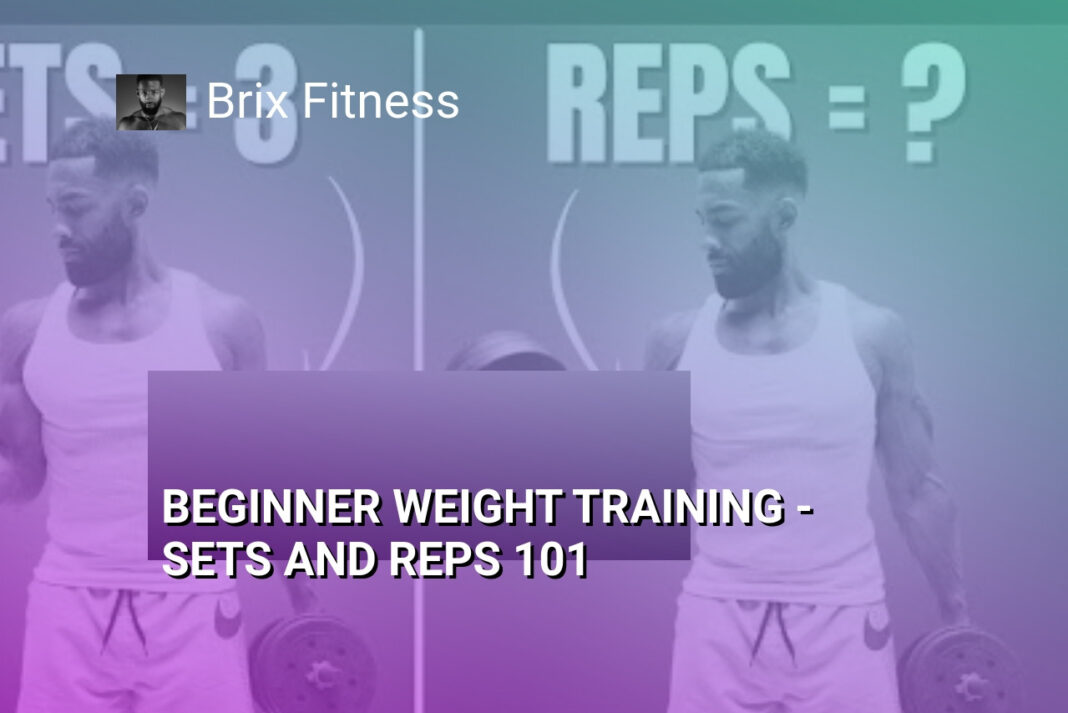The Bottom Line:
- In this video, the narrator provides a comprehensive overview of reps and sets for beginner weightlifters, emphasizing the importance of understanding these concepts to make training more effective.
- The narrator introduces a sample workout from their 12-week transformation program, highlighting the structure of a well-rounded workout with six main exercises and specific rep ranges and rest periods.
- The video discusses the different rep ranges for endurance, muscle building, and strength training, and advises starting with the 12-15 rep range to focus on proper form before progressing to higher-intensity training.
- The narrator provides tips on choosing the right weight, suggesting a guideline of picking a weight that allows for 4 reps left in the tank on the first set, and 1 rep left in the tank on the second set.
- The video emphasizes the importance of consistency, repeating the same foundational exercises, and following a structured plan to stay motivated and achieve your fitness goals.
Understanding Reps and Sets
The Importance of Reps and Sets
Reps, short for repetitions, refer to the number of times you perform a specific exercise. For example, if you do 10 bicep curls in a row, that is 10 repetitions. Sets, on the other hand, are a group of repetitions. If you do 10 bicep curls, take a break, and then do another 10 bicep curls, that is considered two sets.
Structuring Your Workouts
When designing your workout, it’s generally recommended to aim for 5-8 exercises per session. A typical workout structure might include a warm-up, followed by 6 main exercises, each performed for 3 sets of 9-12 repetitions, with 60 seconds of rest between sets.
Choosing the Right Rep Range
There are three main rep ranges used in weightlifting: 12-15 reps for endurance, 8-12 reps for muscle building (hypertrophy), and 1-8 reps for strength. The amount of rest you take between sets is inversely related to the number of reps. For example, if you’re training for strength with lower reps, you may rest up to 5 minutes between sets, while for higher rep ranges, you may only need 30-45 seconds of rest.
If you’re new to weightlifting, it’s recommended to start in the 12-15 rep range with lighter weights to focus on proper form and technique. Once you’ve mastered the movement patterns, you can transition to the 8-12 rep range for muscle building and fat loss.
When choosing the right weight, a good rule of thumb is to select a weight that allows you to complete the first set with 4 reps left in the tank. This ensures you’re not lifting too heavy, which could compromise form and increase the risk of injury.
Remember, consistency and patience are key. Stick to a few fundamental exercises, such as squats, deadlifts, bench press, and rows, and focus on gradually increasing the weight and/or reps over time. This will help you build a solid foundation and make steady progress in your weightlifting journey.
Structuring an Effective Workout
Mastering Proper Technique
Proper form is crucial when it comes to weightlifting, especially for beginners. It’s important to start with lighter weights and focus on perfecting the movement patterns before gradually increasing the load. Recording yourself and comparing your form to instructional videos can be a helpful way to identify and correct any issues. Mastering the basic compound exercises, such as the barbell squat, deadlift, bench press, and pull-ups, should be the foundation of your training program.
Optimizing Rep Ranges
The number of repetitions you perform can have a significant impact on your training goals. Generally, there are three main rep ranges to consider: 12-15 reps for endurance, 8-12 reps for muscle building (hypertrophy), and 1-8 reps for strength development. Beginners should start in the 12-15 rep range to focus on proper technique and build a solid foundation before progressing to heavier weights and lower rep ranges.
Balancing Rest and Recovery
The amount of rest you take between sets is crucial for maintaining intensity and ensuring proper recovery. As a general rule, the lower the rep range, the longer the rest period should be. For example, if you’re training in the 3-5 rep range for strength, you may need up to 5 minutes of rest between sets. Conversely, if you’re working in the 12-15 rep range, 30-60 seconds of rest may be sufficient. Pay attention to your body’s recovery needs and adjust your rest periods accordingly to keep your heart rate elevated and maintain the desired training effect.
Choosing the Right Weight and Rep Range
Mastering Weight and Rep Ranges for Optimal Results
When it comes to weightlifting, the right combination of weight and rep range can make all the difference in achieving your fitness goals. Whether you’re aiming for muscle growth, strength gains, or endurance, understanding the principles behind weight and rep selection is crucial.
Strength-Focused Training
For those seeking to build strength, the lower rep range of 1-8 reps per set is the way to go. This intense approach allows you to lift heavier weights and challenge your muscles to their fullest potential. The trade-off is that you’ll need to allow for longer rest periods, typically 3-5 minutes between sets, to ensure your muscles are fully recovered and ready to give their all.
Hypertrophy-Focused Training
If your primary goal is muscle growth, or hypertrophy, the 8-12 rep range is often considered the sweet spot. This moderate rep range strikes a balance between challenging your muscles and allowing for sufficient recovery. The rest periods for this range are typically shorter, around 60-90 seconds, to keep your heart rate elevated and maintain a metabolic stimulus.
Endurance-Focused Training
For those looking to build endurance, the 12-15 rep range is the way to go. This higher rep range focuses on muscular endurance, with shorter rest periods of 30-45 seconds between sets. While you may not see the same level of strength or muscle growth as with the lower rep ranges, this approach can help improve your overall fitness and cardiovascular health.
Regardless of your specific goals, it’s essential to start with a weight that allows you to maintain proper form throughout the entire set. As you progress, gradually increase the weight while ensuring you can still complete the desired number of reps. Remember, the key is to find the right balance between challenge and recovery, as this will ultimately lead to the best results.
Fundamental Exercises for Beginners
Mastering the Fundamentals: Essential Exercises for Beginners
As a beginner in the world of weightlifting, it’s crucial to focus on mastering the fundamental exercises that will form the foundation of your training. These exercises not only help you build strength and muscle but also ensure proper form, reducing the risk of injury. Let’s dive into some of the essential exercises you should incorporate into your routine.
The Barbell Squat and Goblet Squat
The barbell squat is a compound exercise that targets the lower body, engaging the quadriceps, hamstrings, and glutes. If you’re new to the barbell squat, consider starting with a goblet squat, which uses a dumbbell or kettlebell held at chest level. This variation can help you develop the necessary mobility and stability before transitioning to the barbell squat.
The Deadlift and Romanian Deadlift
The deadlift is another compound exercise that targets the posterior chain, including the hamstrings, glutes, and lower back. The standard deadlift and the Romanian deadlift (RDL) are both excellent options for beginners. The RDL emphasizes the hamstrings and can be a great way to build strength and flexibility in this muscle group.
The Bench Press and Overhead Press
The bench press and overhead press are essential upper body exercises that target the chest, shoulders, and triceps. Start with a flat barbell bench press, and as you progress, consider incorporating variations like the incline bench press or dumbbell bench press. The overhead press, performed with a barbell or dumbbells, is a compound exercise that develops shoulder strength and stability.
Rows and Pull-ups/Chin-ups
Rows, both barbell and seated cable rows, are crucial for building a strong back and improving posture. If you’re able to perform pull-ups or chin-ups, these exercises are excellent for developing upper body pulling strength. If you’re not quite there yet, consider using an assisted pull-up machine or resistance bands to help you build the necessary strength.
Core Exercises: Planks and Russian Twists
A strong core is essential for overall stability and power transfer during your lifts. Incorporate exercises like planks and Russian twists to target your abdominal and oblique muscles, which will support your lifts and help prevent injury.
Remember, consistency is key. Stick to these fundamental exercises, focus on proper form, and gradually increase the weight and intensity as you become more comfortable with the movements. By mastering the basics, you’ll lay a solid foundation for your weightlifting journey and set yourself up for long-term success.
Consistency and Progression
The Importance of Consistency and Progression
Consistency is the cornerstone of any successful weightlifting journey. Establishing a regular training routine and sticking to it is crucial for building strength, muscle, and endurance. Regardless of your specific goals, whether it’s to build muscle, increase strength, or improve overall fitness, consistency is key.
Establishing a Routine
One of the best ways to ensure consistency is to create a structured workout routine. This could involve performing the same exercises and sets on a weekly basis, or following a periodized program that gradually increases the intensity and volume over time. By establishing a routine, you’ll be able to track your progress and make adjustments as needed.
Gradual Progression
Progression is another essential component of an effective weightlifting program. As you become more experienced and your body adapts to the demands of your training, you’ll need to gradually increase the weight, reps, or volume to continue challenging your muscles and driving progress. This could involve adding a small amount of weight to your lifts each week, or increasing the number of sets or reps you perform. Tracking your progress and making incremental adjustments will help you continue to see results over time.
By prioritizing consistency and gradually progressing your training, you’ll be able to build a solid foundation of strength and muscle, while also reducing the risk of injury and burnout. Remember, the journey to your fitness goals is a marathon, not a sprint, and by embracing these principles, you’ll be well on your way to achieving long-term success.





